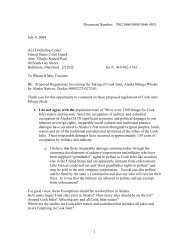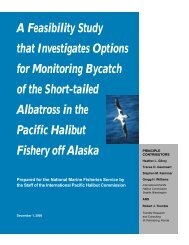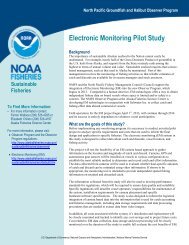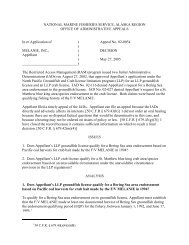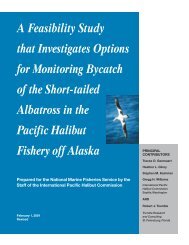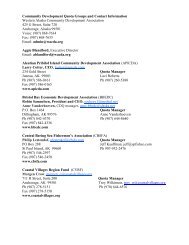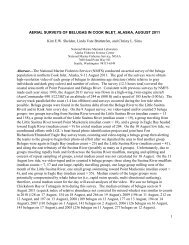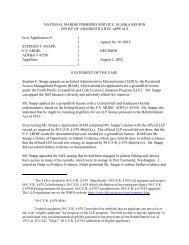Petition to List Lynn Canal Pacific Herring under the Endangered ...
Petition to List Lynn Canal Pacific Herring under the Endangered ...
Petition to List Lynn Canal Pacific Herring under the Endangered ...
Create successful ePaper yourself
Turn your PDF publications into a flip-book with our unique Google optimized e-Paper software.
We argue that sustainability (Hilborn et al. 2003), resistance <strong>to</strong> disturbance (e.g.<br />
Hughes & Stachowicz 2004), and perhaps even <strong>the</strong> ability <strong>to</strong> recover from low<br />
abundance following environmental change or climatic extremes (e.g. Reusch et<br />
al. 2005), are all likely <strong>to</strong> be compromised if this genetic diversity is reduced<br />
through generalized management or misdirected area closures that can<br />
disproportionately impact smaller or less-productive populations. Loss of, or<br />
reduction in such biocomplexity is likely <strong>to</strong> have ecological implications by<br />
affecting <strong>the</strong> dispersal patterns that sustain major fisheries and evolutionary<br />
implications by removing adaptive genetic variation. We stress that detailed<br />
spatial and seasonal information is required for assessing <strong>the</strong> impact of spatially<br />
explicit conservation measures (e.g. marine protected areas, FSBI 2001), even for<br />
widely abundant and highly migra<strong>to</strong>ry species with low levels of genetic<br />
differentiation. Overlooking population differences in spatial use throughout <strong>the</strong>ir<br />
life cycles will affect <strong>the</strong> viability of populations, <strong>the</strong>ir ability <strong>to</strong> recover from low<br />
abundance and <strong>the</strong>ir evolutionary potential.<br />
(Ruzzante et al. 2006).<br />
IX



